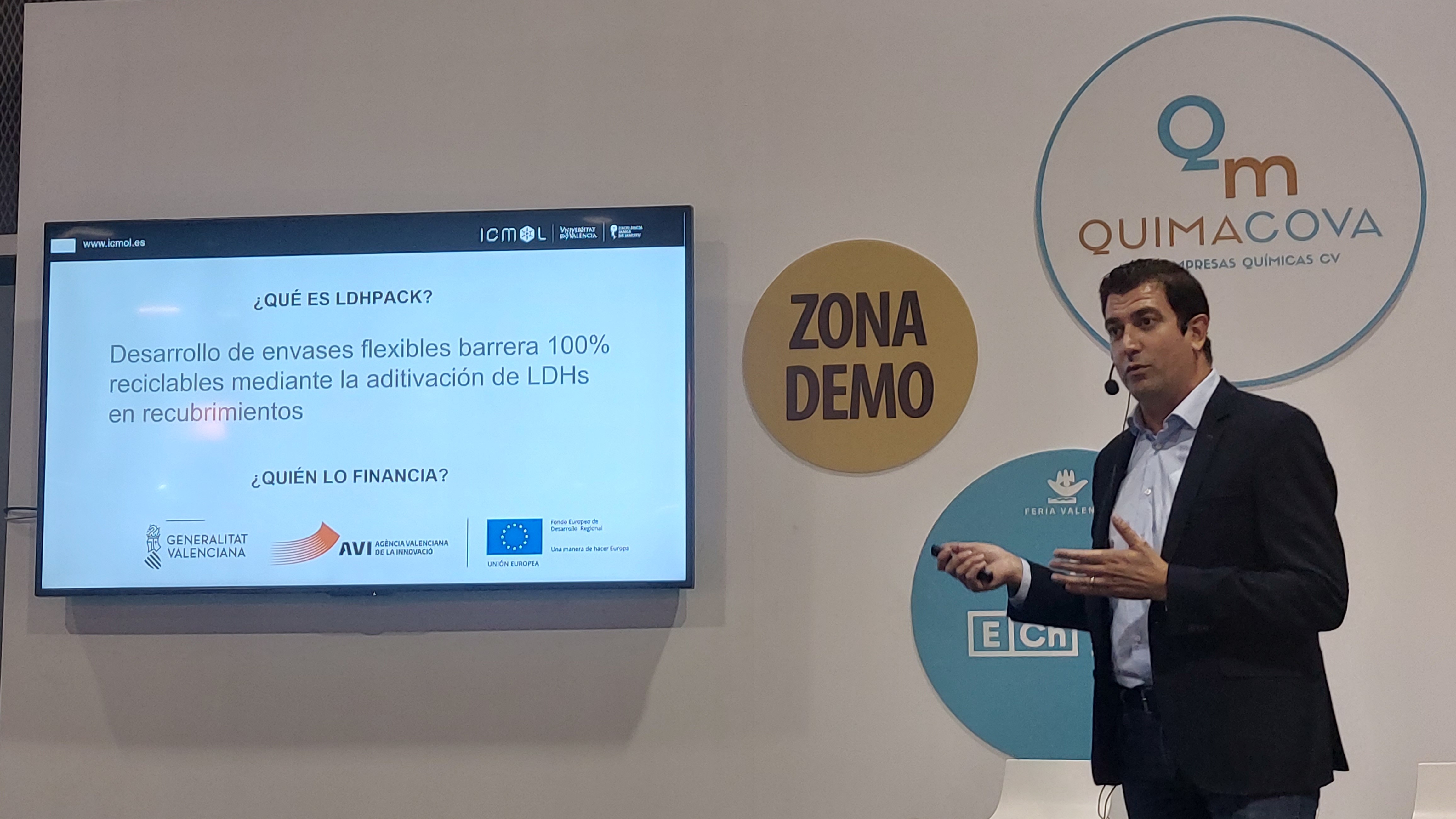The LDHPack project, led by the researcher of the Institute of Molecular Science of the University of Valencia (ICMol) Gonzalo Abellán, proposes the incorporation of lamellar double hydroxides (LDH), a two-dimensional and multifunctional synthetic clay, to the manufacture of plastic packaging with two objectives: to preserve food from deterioration by the action of gases or contact with water and allow the recycling of the packaging
The initiative, developed by the 2DChem group of the Institute of Molecular Science (ICMol), located in the University of Valencia Science Park (PCUV), seeks to create a type of "barrier packaging" that facilitates the preservation of food as long as possible is one of the great desires of the distribution chains. Producers are trying to improve the performance of their products, but also to respond to consumers and their growing demand for eco-designed packaging aligned with sustainable development.
The European Plastics and Circular Economy Strategy foresees that 100% of packaging used in member states should be recyclable, reusable or compostable by 2030. This is one of the great challenges currently facing the industry. But there is another of extraordinary relevance: not having 100% barrier packaging means that every year 1.3 billion tons of food are wasted worldwide due to difficulties in maintaining their properties, according to the Food and Agriculture Organization of the United Nations (FAO).
"We face two major challenges such as early food waste and the manufacture of packaging that is fully recyclable," explains Gonzalo Abellán, ICMol researcher, "And let's not forget that the plastic film that wraps flexible packaging has an effective recycling rate of just 3%, so we have social, economic and environmental reasons that the Agència Valenciana de la Innovació (AVI) has valued to support this research by the 2DChem group," he adds.
"And let's not forget that the plastic film that wraps flexible packaging has an effective recycling rate of just 3%, so we have social, economic and environmental reasons that the Valencian Agency for Innovation has valued to support this research of 2DChem group", Gonzalo Abellán, team leader and LDHPack project leader
Synthesis of new materials
Abellán, leader of the 2DChem group at ICMol, dedicated to the synthesis of new materials for applications such as coatings or energy storage and transformation. The project, according to Abellán, seeks to fabricate these two-dimensional, sheet-like materials to scale and then apply them in multilayer packaging by industry. "In our laboratories we are already able to scale the materials and produce several kilograms," he confirms. The research is already showing promising results in the analyses carried out in collaboration with the Instituto Tecnológico del Embalaje (ITENE).
Jesús Palenzuela, head of Additives, Printing Technologies at ITENE, explains that, technically, it involves applying laminar clay coatings in the form of varnish. "With this, we seek to improve the 'barrier' capacity of the packaging by replacing very complex structures that are difficult to recycle with simpler ones that could be recycled". In this sense, Palenzuela explains that "we are working in sectors of potential industrial application such as snack or nut packers or material printers".
Multilayer containers are a headache for the industry because they contain materials with very different melting points and because the "delamination" of their layers is a very costly process. These materials usually end up in landfill or in titration processes, i.e. conversion into energy (electricity, steam or hot water). Simplifying their composition - polyethylene terephthalate (PET), polyvinylidene chloride (PVDC) or ethylene vinyl alcohol (EVOH) - would improve their recyclability.
LDHs have the advantage that they are already approved by the European Food Agency and have so far been effective in slowing down the effect of oxygen, but not so much of water. This is called "hydrophobicity" (rejection or phobia of water), which raises the challenge of adding an effective barrier to water by incorporating molecules between the LDH films.
"With this we seek to improve the 'barrier' capacity of the packaging by replacing very complex structures that are difficult to recycle with simpler ones that can be recycled," Jesús Palenzuela, head of Additives, Printing Technologies at ITENE
Grammage and adhesion strength
Preliminary analyses of the LDHPACK project have already made it possible to evaluate the grammage and adhesion strength of the varnish selection made for application on polyethylene terephthalate (PET) and polypropylene (PP) films, as well as the substrates chosen for application as flexible films with barrier effect.
The lamellar double hydroxides synthesized in the ICMol laboratories have also been tested to perfect their dispersion in the varnishes and their application on PET substrates, in order to measure their viscosity and stability when dispersed, the coating weight or their permeability to oxygen and water vapor.



